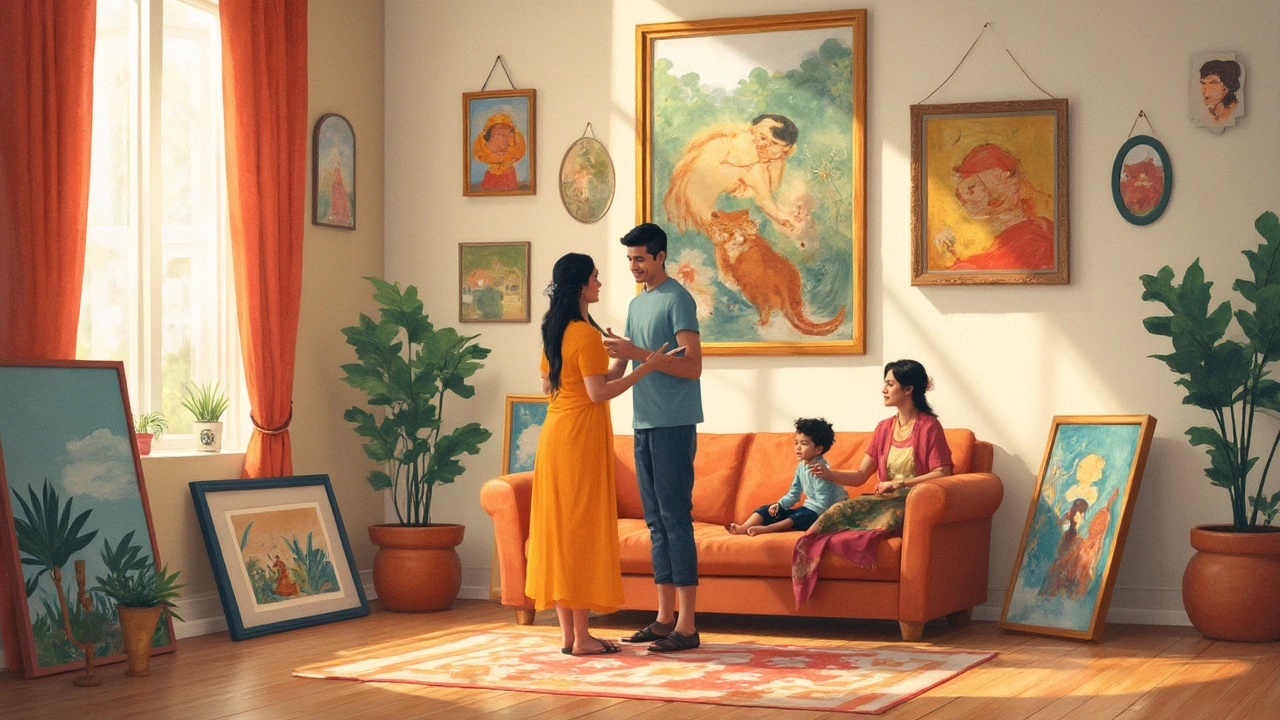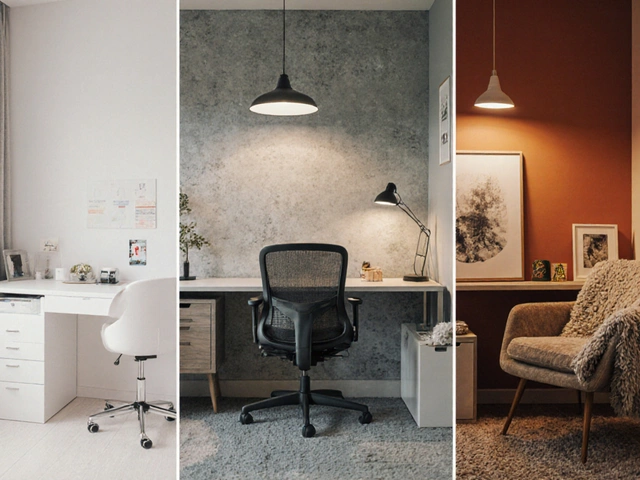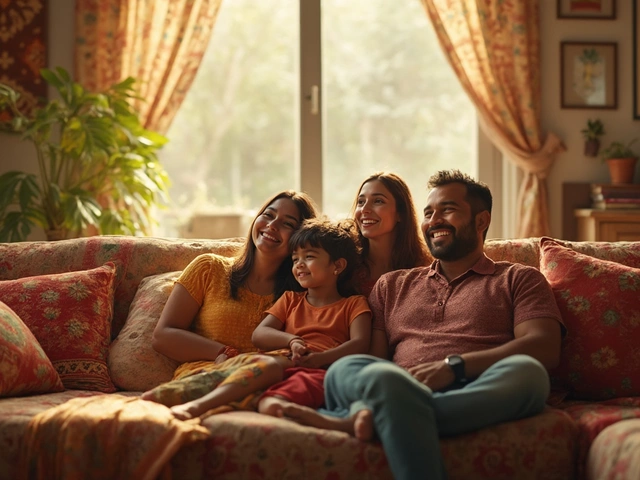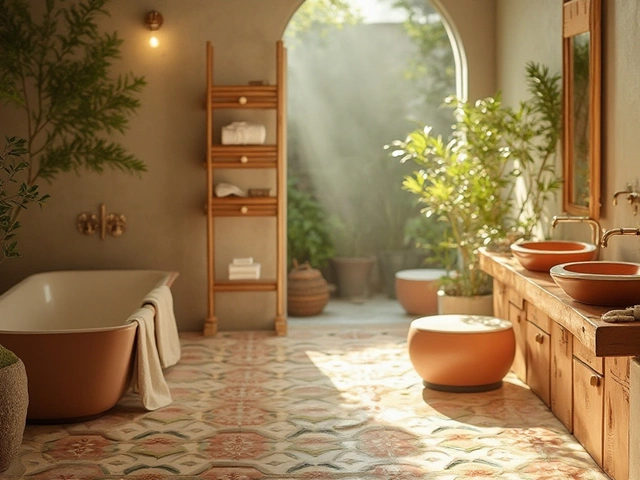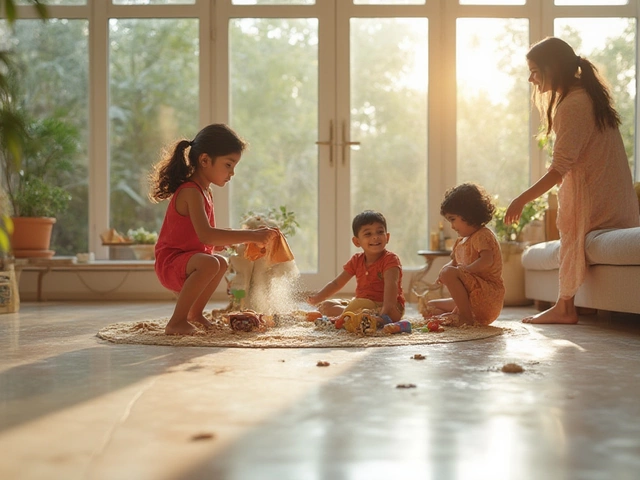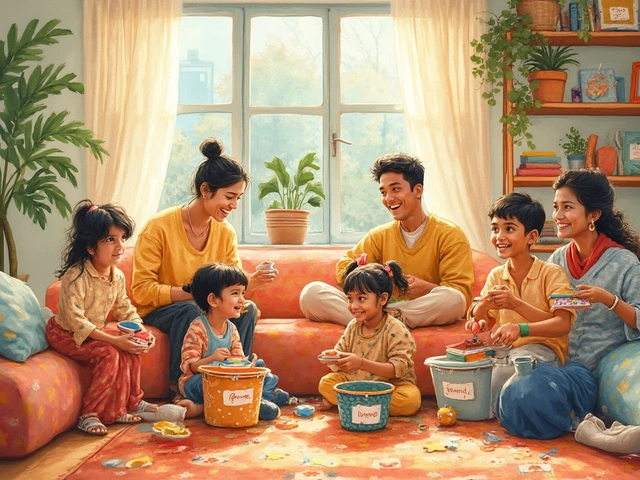Gallery walls can grab your attention in a heartbeat, but stack too much art close together, and suddenly your living room starts to feel like a thrift shop had an explosion. There’s a fine line between that Pinterest-worthy look and just straight-up chaos on your walls.
Most people add art because they want their place to show some personality. That’s great—and honestly, blank walls can feel cold and empty. But maybe you’ve glanced around and realized you barely notice individual pieces anymore. That’s a big sign your walls are more packed than inspiring.
Some interior designers swear by the “breathing room” trick: for every few art pieces, leave a good chunk of empty wall so your eyes can rest. Psychologists even suggest that a crowded wall can add to feelings of stress because there’s so much going on visually. If you start feeling anxious in a room, before blaming your job or your neighbors, take a look at your decorating style first.
- What Happens When You Overdo Wall Art?
- Reading the Room: Personal Style vs Visual Clutter
- How to Display Lots of Art Without Overwhelming
- When to Edit Your Gallery Wall
What Happens When You Overdo Wall Art?
Stacking too much wall art in one room isn’t just a small style slip-up—it can make your place feel cramped and stressful. Researchers from the University of Texas found that visual clutter actually raises your brain’s workload, making it harder to focus and causing more stress. If your art is crammed on every available inch, chances are you’re not loving any of it. Instead, you start tuning it all out, and it just becomes noise.
Let’s talk about why things feel off when you overdo it:
- Visual Overload: When every spot on your wall is jammed, your eyes don’t know where to look. This is called "visual chaos," and it’s a real thing in interior design circles.
- Lost Impact: Individual pieces lose their wow factor. That funky print you loved or your grandpa’s old photograph starts blending into the background.
- Room Feels Smaller: Studies show cluttered walls can make a room feel significantly tighter, with one 2022 survey reporting people rated rooms with packed walls as 15% smaller on average.
- Stress Builder: According to a UCLA study, cluttered environments can raise the hormone cortisol, which is linked to stress. Even art, if it’s everywhere, will add to this.
- Difficult to Clean: Let’s be honest, dusting around twenty frames isn’t fun. More art = more maintenance.
Here’s a quick look at how wall art density affects room perception and mood:
| Wall Coverage | Room Mood | Attention to Art |
|---|---|---|
| 30% or less | Open, calm | High |
| 50% | Cozy, curated | Moderate |
| 80% or more | Busy, tense | Low |
If you’re feeling restless at home, take a look at your walls. Sometimes, less really is more—at least when it comes to hanging art.
Reading the Room: Personal Style vs Visual Clutter
Everyone has that friend whose living room is a wild mix: concert posters, vacation photos, maybe even a painting from their grandma. That’s personal style in action. But if you walk in and get hit by a wave of overload—where every wall is stuffed edge to edge and you can’t focus on any single piece—that’s when things tip into visual clutter. The tricky part: what feels like clutter to one person might look cozy to another.
Studies from the Princeton Neuroscience Institute found that visual clutter can make it harder for our brains to focus and process information. In your own space, this means your favorite art could lose its impact if the walls are too busy. You want each piece to stand out, not get lost in the crowd.
How do you tell if your walls are skating into clutter territory? Here’s a fast checklist:
- Can you remember most of the artwork without looking at the wall?
- When guests visit, do they ask about a specific piece?
- Does your room feel calm, or do you constantly feel distracted?
- Is there space between your *wall art* or does it all run together?
- Do you feel tempted to keep adding without taking anything away?
If you’re getting more no’s than yes’s, it might be time to edit.
Here’s a quick look at what people tend to prefer, according to a recent home design survey from Apartment Therapy:
| Wall Art Style | % of Respondents Who Prefer It |
|---|---|
| Sparse, Minimalist Walls | 42% |
| Moderate, Curated Gallery Walls | 36% |
| Full, Eclectic Mix | 22% |
This doesn’t mean you need to play it safe. It just means even if you’re drawn to bold displays, giving each piece breathing room most of the time lets your personal style shine without the chaos. Arrange, step back, and actually look at your walls from a distance—you’ll see right away if a simple tweak could make a world of difference.
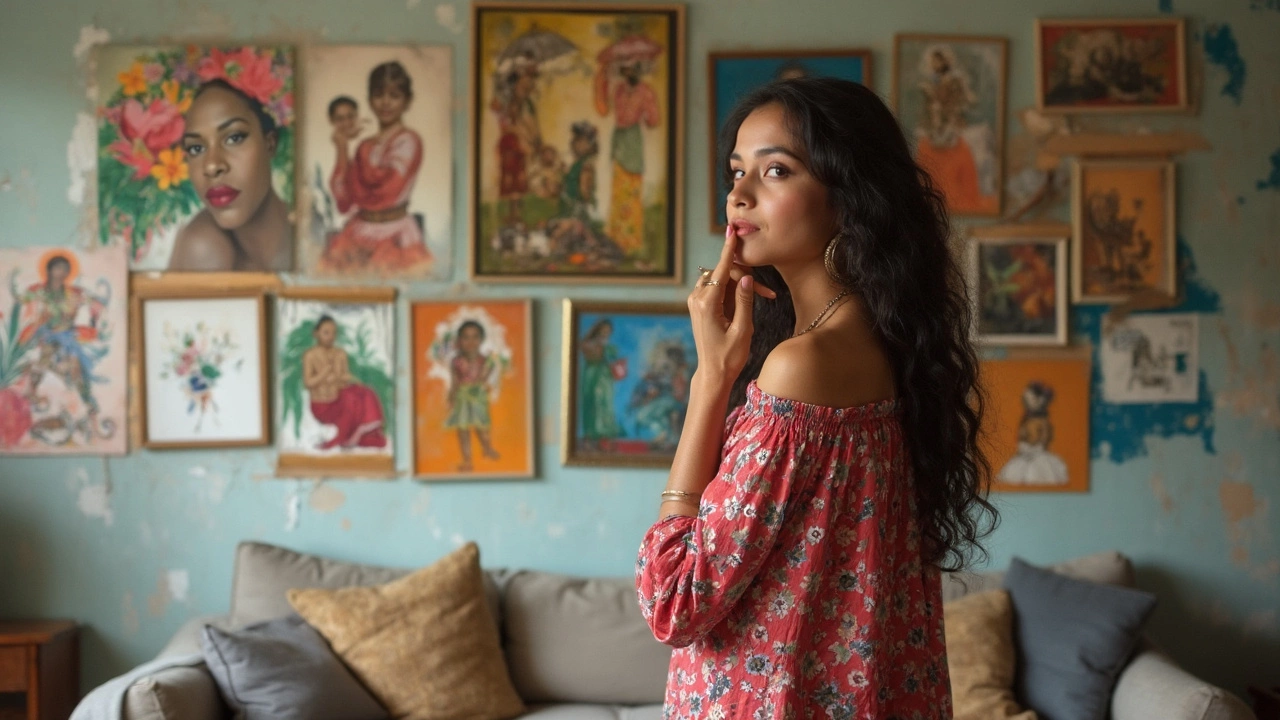
How to Display Lots of Art Without Overwhelming
Ready to show off your epic wall art collection but worried about creating chaos? A good plan can turn that mess into magic. Here’s how people who love art fill their walls without feeling like they’re living in clutter central.
The trick is all about balance and thinking through your display layout. The right setup makes each piece stand out—even when you’ve got a lot going on. Start by grouping similar colors or themes together. This creates connection and is less stressful on the eyes. A gallery wall doesn’t have to fill every inch; keep some space between frames, and stick to an invisible grid or straight line. A Harvard study found that people rate spaces as more comfortable and relaxing when there’s at least 2-3 inches between art pieces. That distance actually gives your eyes time to process what you’re looking at.
"The secret to a great gallery wall is editing. Not every piece you love needs to be up at once. Choose your favorites and rotate them seasonally." – Nate Berkus, Designer
Here are a few practical tips for pulling it off:
- Mix up sizes: Don’t just use all huge frames or all tiny ones. Anchor the arrangement with one or two larger pieces.
- Stick to a color scheme: Limit the palette so the art feels like it belongs together, even if the styles are different.
- Plan before you hang: Lay the art out on the floor first or use paper templates taped to the wall. This saves time (and nail holes).
- Let lighting help out: Aim for even lighting so nothing gets lost in the shadows. A couple of cheap LED picture lights do wonders.
- Rotate your display: Just like a museum, swap art out every few months so it always feels fresh.
Want proof that less is often more? Check out this comparison:
| Wall Setup | Reported Stress Level | Viewer Satisfaction |
|---|---|---|
| Wall filled edge-to-edge | High | Low |
| Gallery with space between pieces | Low | High |
People tend to enjoy rooms more when art isn’t jammed together. So while showing off all your favorite things is tempting, keep the overall vibe in mind. It’s way easier on you—and anyone else setting foot in your place—to appreciate the art when your wall is curated, not crowded.
When to Edit Your Gallery Wall
Just because you love all your art pieces doesn’t mean they all have to fight for space at the same time. If your wall art starts feeling crammed, that might be your cue to edit things down. People often forget that rotating art keeps things interesting. Even art galleries swap out their exhibits—so why not do the same at home?
If it’s getting harder to clean the wall or dust your frames, that’s a very practical clue there’s too much going on. When you or your guests can’t appreciate individual artwork or recall what’s hanging where, your wall may be overcrowded. Research by the University of Texas found that visual clutter can spike stress levels and make spaces feel uncomfortable—definitely not what you want for your living room or bedroom.
- Walk out of the room and come back in. What’s the first thing you notice? If it’s just a mash-up of frames and not a standout piece, it’s time to rearrange.
- Ask a friend for honest feedback. Sometimes you’re too close to see the problem, but a fresh pair of eyes can point out if something feels off.
- Notice if there are too many similar colors, frames, or styles bunched together. Mixing it up adds interest without making everything blend into one visual blob.
Stick to this simple guideline: Leave at least 3-6 inches of wall space between most pieces. Museum studies have shown that people pay attention longer when art has space to breathe.
If you’re into numbers, check out what design surveys say about wall art display:
| Survey | Average Art Pieces in Living Areas | Preferred Gap Between Pieces |
|---|---|---|
| Houzz Design Trends (2023) | 4-7 | 3-6 inches |
| National Association of Home Builders (2024) | 5 | 4 inches |
Editing doesn’t mean losing out—it just means giving each piece a better chance to shine. Swap out art with the seasons, or whenever your mood changes. This way, your walls look fresh, neat, and full of personality, not packed to breaking point.
